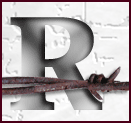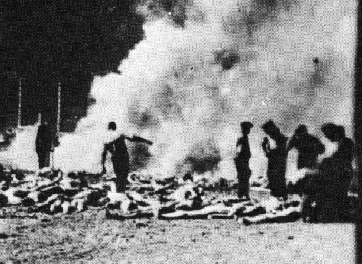



 Resistance was almost impossible in Auschwitz, where disobedience
meant torture and death, for one's peers as well as oneself. Nevertheless,
it occurred. The most notable instance was that of the Sonderkommando that
seized a crematorium.
Resistance was almost impossible in Auschwitz, where disobedience
meant torture and death, for one's peers as well as oneself. Nevertheless,
it occurred. The most notable instance was that of the Sonderkommando that
seized a crematorium.Just months before the liberation of the camp, when it was already known that the Russian army was approaching, the SS caught wind of the fact that the last of the Sonderkommando--the squads of Jewish prisoners formed to shepherd their fellows to the gas chamber-- were planning an uprising. They determined to eliminate them all.
On October 7, 1944, as the SS were forming a detail of three hundred members of the Sonderkommando for some outside work (this was thought to be a ruse to separate and execute them) the Sonderkommando began pelting the SS with stones and drove them off. They packed crematorium IV with explosives they had "organized" or stolen, and blew it up. Eighty to one hundred trucks of SS men arrived and the Sonderkommando fought them with stolen machine guns and grenades they had been stockpiling; the SS responded in kind and by unleashing fifty attack dogs.
Sonderkommando in other units rose up too; some seized crematorium II and threw an SS man and a kapo into the furnace alive. Some men cut holes in the barbed wire and fled, but in the wrong direction, remaining within the larger confines of the extended camp. The SS trapped some in a barn and set fire to it, and hunted others down in the woods; by the end of the day, hundreds of members of the Sonderkommando had been burned or shot to death.
After the revolt was put down, the remaining two hundred members of the Sonderkommando were executed, some with flamethrowers.
Friedrich, pp. 80-85.
